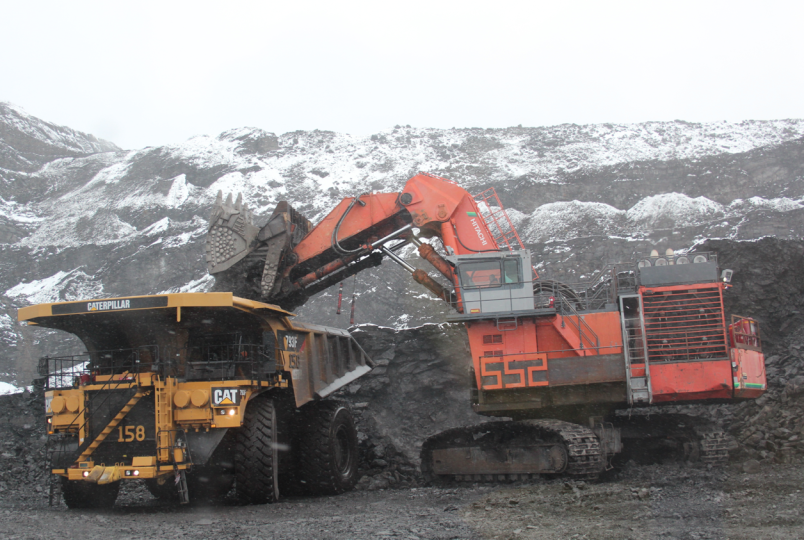World
B.C. Coal Mine Fined $13,000 for Severe Dust Emissions Violations

A coal mine operator in British Columbia has been fined $13,000 for exceeding dust emissions limits by significant margins. Conuma Resources Limited’s Brule Mine reported fugitive dust emissions that surpassed provincial thresholds by as much as 375%. The violations occurred 32 times over an 18-month period spanning 2023 and 2024.
In a ruling issued on August 18, 2023, Stephanie Little, the director of the Environmental Management Act, highlighted findings from the U.S. Environmental Protection Agency (EPA). The agency has indicated that dust emissions, particularly fine particulate matter measuring 2.5 microns or less, pose both immediate and long-term health risks. Such dust is known to exacerbate conditions like asthma and chronic bronchitis, while also increasing the likelihood of heart attacks and premature death among individuals with pre-existing heart or lung diseases.
Located approximately 57 kilometers southwest of Chetwynd, the Brule Mine is one of three operations that Conuma runs in northwest B.C. to supply coal for the steelmaking industry. The mine employs about 900 people in the Peace River Regional District. According to the company’s website, mining in the permitted areas of the Brule site is expected to conclude in late 2024, with plans to transition the mine to “care and maintenance” in 2025.
The recent penalty reflects a pattern of non-compliance. In the previous year, Conuma faced fines exceeding $41,000 for failing to adequately monitor mine waste entering a nearby fish-bearing tributary. In total, the company received nine administrative penalties and 24 inspection reports indicating violations over the past decade.
Despite having the opportunity to contest the penalty, Conuma did not respond. Inspectors from the Ministry of Environment and Parks found that the company’s dust suppression efforts—including re-vegetation, road maintenance, and the use of dust-curbing chemicals—were insufficient in keeping emissions within acceptable limits. Of the 32 emissions violations recorded, 19 exceeded air quality limits by more than 50%.
Little categorized the violations as “moderate,” noting that the company exhibited a “no to low level of deliberateness” regarding the emissions. She acknowledged that although fine particulate concentrations can threaten human health, the environmental impacts remain “not well understood.”
In her decision, Little stated, “The lack of measurable impacts to the environment and human health best classifies the actual or potential adverse effects of these failures as low to none.” This assessment highlights the complex nature of dust emissions and their consequences, revealing the challenges regulators face in balancing industrial operations with public health and environmental stewardship.
-

 Science2 months ago
Science2 months agoToyoake City Proposes Daily Two-Hour Smartphone Use Limit
-

 Health2 months ago
Health2 months agoB.C. Review Reveals Urgent Need for Rare-Disease Drug Reforms
-

 Top Stories2 months ago
Top Stories2 months agoPedestrian Fatally Injured in Esquimalt Collision on August 14
-

 Technology2 months ago
Technology2 months agoDark Adventure Game “Bye Sweet Carole” Set for October Release
-

 World2 months ago
World2 months agoJimmy Lai’s Defense Challenges Charges Under National Security Law
-

 Technology2 months ago
Technology2 months agoKonami Revives Iconic Metal Gear Solid Delta Ahead of Release
-

 Technology2 months ago
Technology2 months agoSnapmaker U1 Color 3D Printer Redefines Speed and Sustainability
-

 Technology2 months ago
Technology2 months agoAION Folding Knife: Redefining EDC Design with Premium Materials
-

 Business2 months ago
Business2 months agoGordon Murray Automotive Unveils S1 LM and Le Mans GTR at Monterey
-

 Technology2 months ago
Technology2 months agoSolve Today’s Wordle Challenge: Hints and Answer for August 19
-

 Lifestyle2 months ago
Lifestyle2 months agoVictoria’s Pop-Up Shop Shines Light on B.C.’s Wolf Cull
-

 Technology2 months ago
Technology2 months agoApple Expands Self-Service Repair Program to Canada









